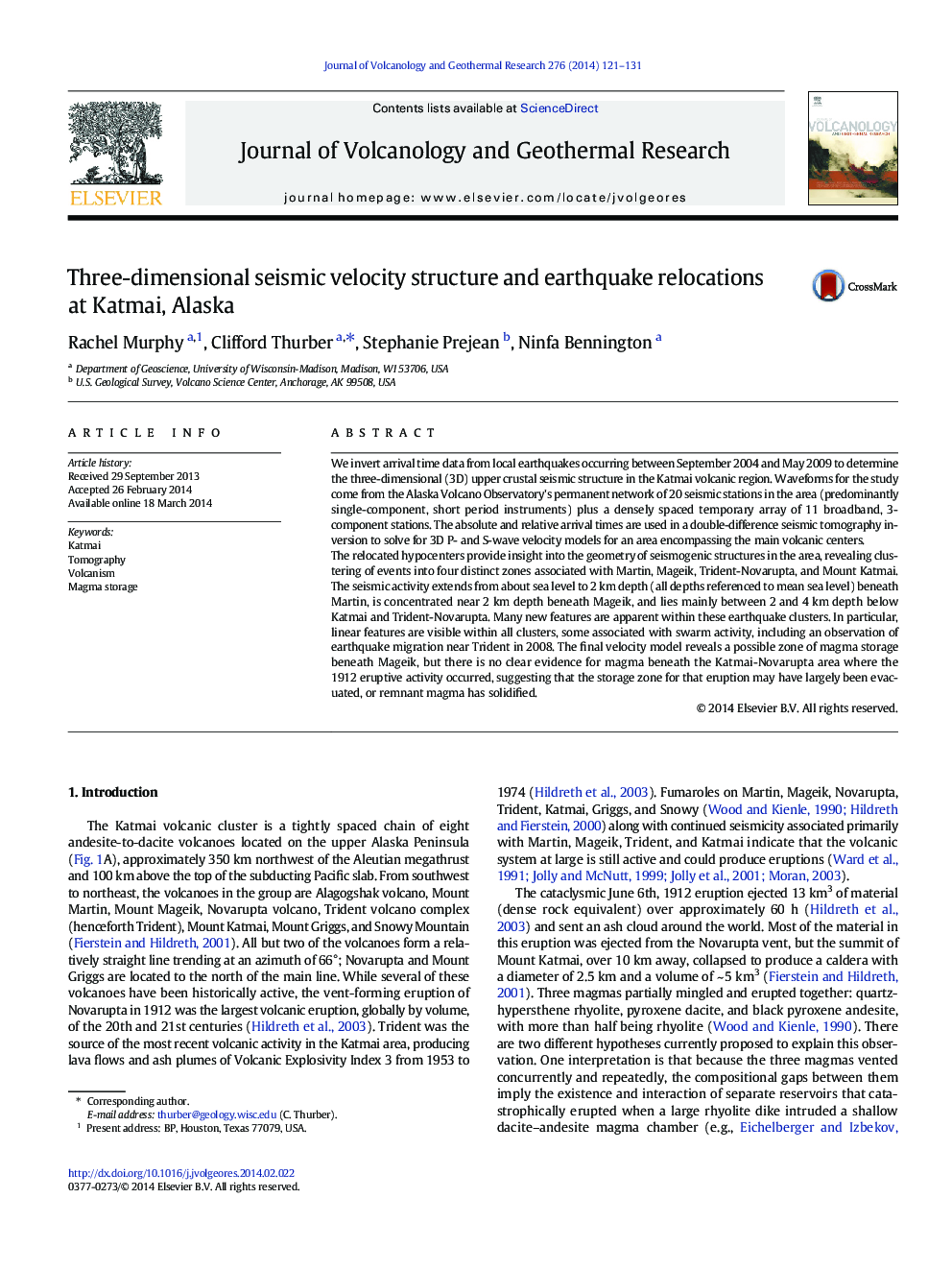| Article ID | Journal | Published Year | Pages | File Type |
|---|---|---|---|---|
| 6440065 | Journal of Volcanology and Geothermal Research | 2014 | 11 Pages |
Abstract
The relocated hypocenters provide insight into the geometry of seismogenic structures in the area, revealing clustering of events into four distinct zones associated with Martin, Mageik, Trident-Novarupta, and Mount Katmai. The seismic activity extends from about sea level to 2Â km depth (all depths referenced to mean sea level) beneath Martin, is concentrated near 2Â km depth beneath Mageik, and lies mainly between 2 and 4Â km depth below Katmai and Trident-Novarupta. Many new features are apparent within these earthquake clusters. In particular, linear features are visible within all clusters, some associated with swarm activity, including an observation of earthquake migration near Trident in 2008. The final velocity model reveals a possible zone of magma storage beneath Mageik, but there is no clear evidence for magma beneath the Katmai-Novarupta area where the 1912 eruptive activity occurred, suggesting that the storage zone for that eruption may have largely been evacuated, or remnant magma has solidified.
Related Topics
Physical Sciences and Engineering
Earth and Planetary Sciences
Geochemistry and Petrology
Authors
Rachel Murphy, Clifford Thurber, Stephanie Prejean, Ninfa Bennington,
